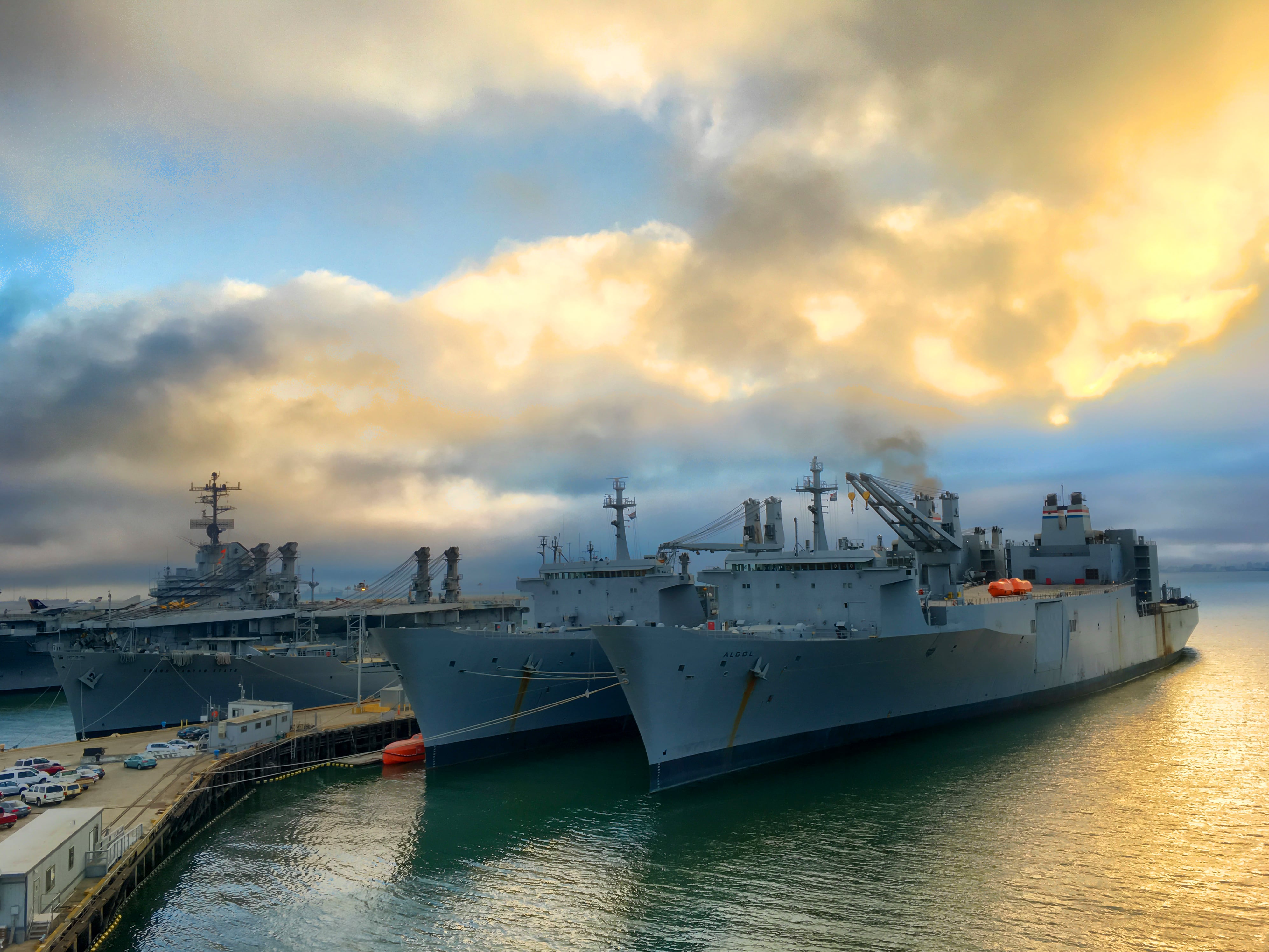WASHINGTON – The U.S. Navy generated glowing headlines and cheering crowds when deploying its hospital ships Mercy and Comfort to Los Angeles and New York City respectively. But the ships are both pushing 50 years old and need replacing, and what those replacements will look like is anything but certain.
Both ships were converted super-tankers designed for providing care for combat casualties. And while both ships have combat deployments under their belts during Operation Desert Storm and Operation Iraqi Freedom, they are far more frequently used for disaster relief and medical outreach missions across the globe.
During nearly 35 years of service, the distinctive white hulls and red crosses have become symbols of American soft power abroad and, occasionally, the symbol of the Defense Department pitching in at home. The Comfort was deployed during Hurricane Katrina to New Orleans and in 2017 to Puerto Rico after Hurricane Maria. Both Mercy and Comfort today are providing emergency care in Los Angeles and New York to free up civilian hospitals to focus on COVID-19 patients.

But much like the bulk of the surge sealift fleet, the ships run on outdated steam plants that fewer and fewer mariners know how to operate and maintain. And, like classic cars, they need constant care and attention to keep in working order. In 2018, the Navy proposed decommissioning one of the ships in 2021, but was blocked by Congress.
According to the 2019 National Defense Authorization Act, the Navy can only decommission the hospital ships once they field a replacement.
The Navy’s plan to recapitalize them relies on their Common-Hull Auxiliary Multi-Mission Platform (CHAMP) concept, which proposes a new-build common hull that can be altered to meet a number of different mission. According to the 2020 long-range shipbuilding plan, the hospital ship CHAMPs would be acquired in 2033 and 2034 for delivery in 2036 and 2037.
The Navy has been planning to develop and field two variants of the CHAMP, one for sealift purposes and one for other auxiliary ship missions such as the submarine tending, hospital ships, and command-and-control platforms.
But a White House Office of Management and Budget memo obtained by Defense News in December showed OMB blanching at a cost estimate of upward of $1.3 billion for the submarine tender variant of the CHAMP platform, planned for acquisition in 2024.
“The CHAMP submarine tender and CHAMP sealift vessels are not cost-effective solutions. The revised estimate for the sub tender ($1.3 billion) is even more than the $1 billion in the FYDP [Future Years Defense Program] and more cost-effective alternatives should be explored, including procuring and converting a used vessel,” the memo read.
RELATED

With the future of CHAMP up in the air, it’s not clear what will become of the Navy’s hospital ships, and what seems clear is that large 1,000-bed floating hospitals are probably not what the service needs in the future, said Sal Mercogliano, an associate professor of History at Campbell University and former civilian mariner who studies maritime issues.
“The hospital ships are really designed for receiving mass casualties from a battlefield,” Mercogliano said. "And the problem the Navy has is that the mission – they don’t really see the requirement anymore to maintain two vessels with 2,000 beds, because they are really expensive to operate.
"It drains the medical facilities ashore of doctors and nurses that then need to be back-filled with reservists, creates huge problems for[the Navy’s Bureau of Medicine and Surgery] to be able to staff them up.”
On many of the missions the Comfort and Mercy are assigned, the ships are staffed up to 250 bed or maybe 500 beds and then bring on civilian agencies. A further complicating factor is, as they age, they get more expensive to maintain, he said.
“Look, they’re steam powered, which means its getting harder and harder to find civilian mariners who are boiler engineers – there are just not a lot of them out there.”
But that they should be recapitalized in some way isn’t much in question. The return on investment the Navy gets for its hospital ships is enormous, said Jerry Hendrix, a retired Navy captain and analyst with the Telemus Group.
"There has been a consistent demand for hospital ships as part of presence and influence operations ever since those ships joined the fleet,’ Hendrix said. "But there probably is not a requirement for a 1,000-bed hospital ship. What we’re seeing now is something of an anomaly in that its doing something it wasn’t built to do: Humanitarian assistance and disaster relief at home.
“But there is definitely a demand for recapitalizing those ships with something in the 200-to-500-bed range that would have more access to ports that aren’t deep-water ports.”
The sheer size of Mercy and Comfort – both displacing more than 65,500 tons – have limited the kinds of missions the ships can perform, Hendrix said.
“I think we need to look at smaller variants that are more accessible to a broader variety of ports and conditions,” he said.
David B. Larter was the naval warfare reporter for Defense News.








